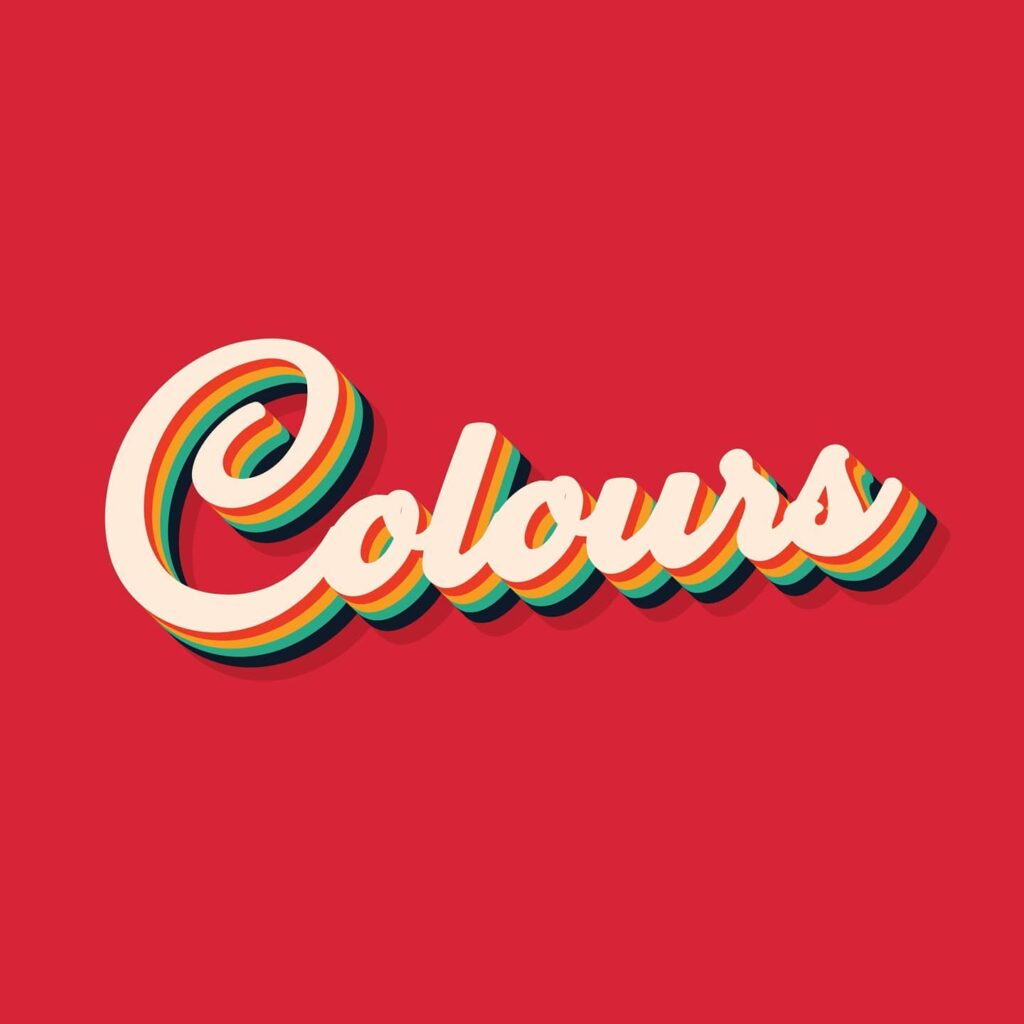

Colours is a powerful tool in graphic design that can evoke emotions, convey messages, and influence perceptions. The study of colours psychology delves into the psychological and emotional responses triggered by different colours. Understanding the impact of colours on human behaviour and perception is essential for graphic designers to create effective and impactful designs. In this blog post, we will explore the fascinating world of colours psychology and how it influences graphic design.
The Basics of Colours Psychology: Colours psychology is the study of how colours affect human emotions, moods, and behaviours. Different colours have distinct psychological associations and can evoke specific feelings and responses. For example, warm colours like red and orange are often associated with energy, passion, and excitement, while cool colours like blue and green evoke feelings of calmness and serenity.
Choosing Colours for Branding: In branding, colours plays a crucial role in establishing brand identity and communicating the brand’s message. Different industries and target audiences may require specific colours choices. For example, blue is often associated with trust and reliability, making it a popular choice for financial institutions. Consider the brand’s personality, target audience, and industry when selecting colours for branding, as they can shape how people perceive the brand.
Emotional Associations of Colours: Understanding the emotional associations of colours can help designers create designs that resonate with the desired audience. Here are a few examples:
Red: Associated with passion, energy, and urgency, it can grab attention and stimulate action. It is often used for calls-to-action or to create a sense of urgency.
Blue: Symbolizes trust, reliability, and calmness. It is commonly used by corporate brands and healthcare organizations to create a sense of stability and professionalism.
Green: Represents nature, growth, and harmony. It is often used in designs related to sustainability, health, and eco-friendly products.
Yellow: Associated with happiness, optimism, and creativity. It can grab attention and create a sense of enthusiasm, making it suitable for designs targeting a youthful audience.
Cultural Influences: Colours can have different cultural associations and interpretations. For instance, while white represents purity and simplicity in Western cultures, it is associated with mourning in some Eastern cultures. When designing for a global or culturally diverse audience, it is essential to consider the cultural context and ensure that colours choices are culturally sensitive.
Colours Harmony and Contrast: Creating harmonious colours schemes and utilizing contrast effectively can enhance the visual impact of graphic designs. Colours harmony refers to the pleasing combination of colours that work well together, such as complementary, analogous, or triadic colours schemes. Contrast, on the other hand, involves using colours with significant differences in hue, value, or saturation to create visual interest and emphasize important elements.
Accessibility Considerations: Inclusive design is crucial in graphic design, and this extends to colours choices. Consider individuals with colours blindness or visual impairments by ensuring sufficient contrast between text and background colours. Utilize accessible colours palettes that meet accessibility guidelines and provide equal readability for all users.
Contextual Significance: Colours can convey different meanings based on their context and how they are used. For example, red can symbolize danger or love, depending on the context. Consider the overall design concept, the target audience, and the intended message to ensure the colours used align with the desired meaning.
Conclusion: Colours psychology plays a vital role in graphic design, influencing how people perceive and respond to designs. By understanding the emotional associations and cultural influences of colours, designers can create designs that effectively communicate the intended message and resonate with the audience. From branding to user interfaces, colours choices have a significant impact on the success of graphic design projects. Embrace the power of colours psychology in your designs and unleash its potential to evoke.






I’m a Graphic Designer with a passion for creating unique and visually stunning designs. I have a keen eye for detail and a deep understanding of colour, typography, and composition. With years of experience in the industry, I have worked with a variety of clients across different sectors, including fashion, tech, and hospitality.

I’m a graphic designer with a passion for creating unique and visually stunning designs.
info@mintgrafix.com
(+44) 07355 662 129
mintgrafix © 2023 (All rights reserved)